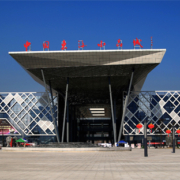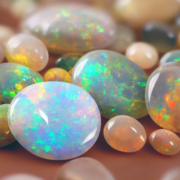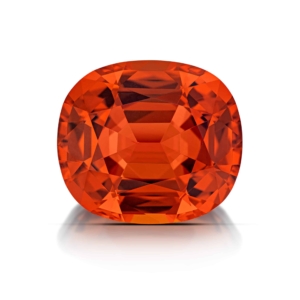Donghai Crystal
Donghai Crystal refers to high-quality crystals and gemstones sourced from Donghai County, located in the Jiangsu Province of China. Donghai is renowned for its rich deposits of various types of crystals, including quartz, amethyst, agate, tourmaline, and other semi-precious stones. The region has become one of the most significant centers for crystal mining, processing, and trade in China, with a long history of crystal-related craftsmanship and commercial production.

Key Features of Donghai Crystal:
- Location and Mining:
- Donghai County is located in Jiangsu Province, on the eastern coast of China, which gives it access to significant mineral deposits.
- The region is well-known for its mining operations of quartz and other gemstones, with Donghai serving as a major hub for the mining, processing, and distribution of crystals both domestically and internationally.
- Varieties of Donghai Crystal:
- Quartz: Donghai is a major producer of natural quartz crystals, including clear quartz, amethyst (purple quartz), citrine, rose quartz, and smoky quartz. These crystals are highly valued for their beauty, durability, and metaphysical properties.
- Agate: Donghai is also famous for its production of agate, a variety of chalcedony that comes in different colors and patterns. Agate is often used in jewelry, carvings, and as decorative items.
- Tourmaline: This mineral is another key product of Donghai, and the region is known for its high-quality tourmaline crystals, which come in a wide range of colors, including green, pink, and blue.
- Jade: Although not as abundant as other types of crystals, jade is also found in certain areas of Donghai and is prized for its use in art and jewelry.
- Other Gemstones: The region is home to a variety of other gemstones like ametrine, moonstone, and obsidian, which are processed and sold as decorative items, ornaments, and healing stones.
- Quality and Processing:
- Donghai County is known for its skilled craftsmanship in cutting, polishing, and shaping crystals. Crystals from this region are often used in fine jewelry, crystal healing, and spiritual practices.
- The crystals from Donghai are often highly valued for their clarity, translucency, and color vibrancy. They are meticulously processed and polished to highlight their natural beauty.
- Donghai Crystal Trade:
- Donghai has become a major player in the global crystal trade, exporting its high-quality gemstones to markets in Asia, Europe, and North America. It has built a reputation for both natural and processed crystals.
- The region has developed a network of crystal markets, where traders, collectors, and jewelers gather to buy and sell a wide range of crystals.
- Metaphysical and Healing Properties:
- Clear Quartz: Known as the “master healer,” clear quartz from Donghai is believed to amplify energy, enhance healing, and improve meditation practices.
- Amethyst: Donghai amethyst is thought to offer spiritual protection, calming, and clarity. It is often used in crystal healing to relieve stress and promote emotional balance.
- Citrine: Citrine from Donghai is associated with abundance, creativity, and personal power, and is often used to attract prosperity and success.
- Rose Quartz: Rose quartz crystals from Donghai are believed to promote love, compassion, and emotional healing. They are frequently used in relationships and self-care practices.
- Agate: Agate from Donghai is thought to bring balance, grounding, and protection. It is used in crystal healing to stabilize energy and provide emotional support.
- Tourmaline: Tourmaline from Donghai is often used for protection and cleansing, absorbing negative energy and promoting emotional healing.
- Uses of Donghai Crystals:
- Jewelry: Donghai crystals, particularly amethyst, quartz, and agate, are commonly used to create beautiful necklaces, bracelets, rings, and earrings. These gemstones are popular in both traditional and modern jewelry designs.
- Crystal Healing: Donghai crystals are highly prized in the world of alternative healing and spiritual practices. Clear quartz is often used in energy work, while rose quartz and amethyst are popular for emotional healing.
- Carvings and Sculptures: The region is also known for its skilled crystal carving and sculpting. Donghai’s artisans craft beautiful decorative items, crystal figurines, and healing stones. These pieces are often sold as home decor or used in feng shui practices.
- Crystal Clusters: Donghai is also known for producing large crystal clusters, which are often used in interior design or as focal points for meditation spaces. These clusters can be composed of quartz, amethyst, or calcite.
- Geodes and Spheres: Another common form of crystal from Donghai is the geode (hollow rocks lined with crystals). These are often prized for their natural beauty and used as decorative objects or healing tools.
- Donghai Crystal Certification and Authenticity:
- To guarantee the quality and authenticity of Donghai crystals, many pieces are graded and certified by trusted organizations in the gem and crystal industry.
- ICIA (International Crystal Grading and Certification), a leading authority in crystal certification, ensures that crystals from Donghai meet strict standards of quality and authenticity.
- Certificates of origin and quality grading can help buyers ensure that they are purchasing genuine Donghai crystals.
- Cultural Significance:
- Donghai Crystals have deep cultural significance in China, especially in traditional practices like feng shui, meditation, and spiritual rituals. Many crystals from this region are thought to enhance spiritual energy and are used for healing, protection, and prosperity.
- Crystal collectors and practitioners around the world appreciate the beauty and metaphysical properties of Donghai crystals, which are often regarded as powerful tools for personal growth and energy work.
Conclusion:
Donghai Crystal refers to the high-quality gemstones and crystals mined, processed, and traded from Donghai County in Jiangsu Province, China. With its rich deposits of various types of crystals, particularly quartz, agate, amethyst, and tourmaline, Donghai has established itself as a major hub for crystal production and trade. The region is known for producing crystals with outstanding clarity, color, and energy, making them popular in both the jewelry market and the healing community. Whether for decorative purposes, meditation, or spiritual practices, Donghai crystals are highly regarded worldwide.
Would you like to explore more specific types of crystals from Donghai or learn about their uses in spiritual practices or healing?



Leave a Reply
Want to join the discussion?Feel free to contribute!